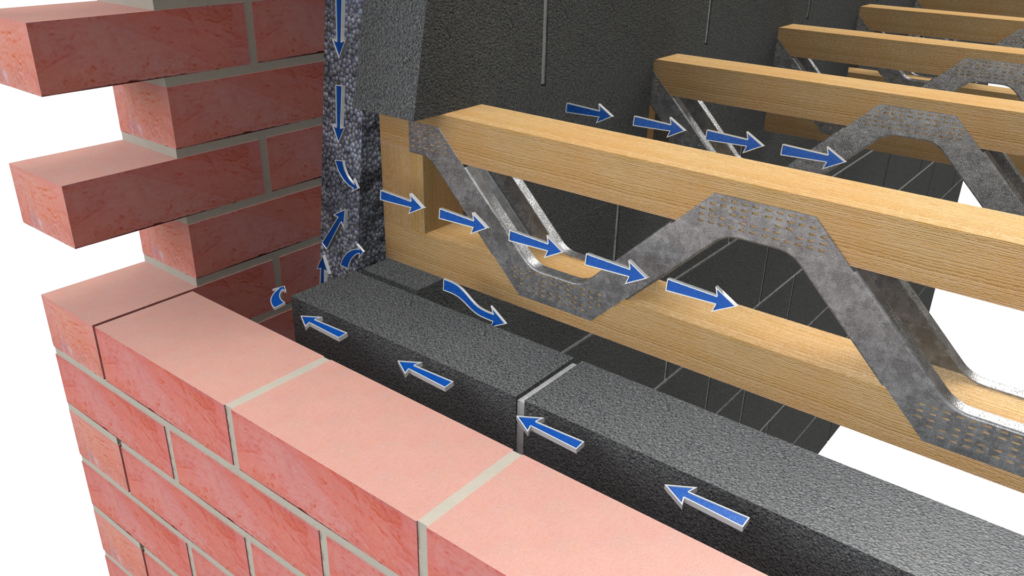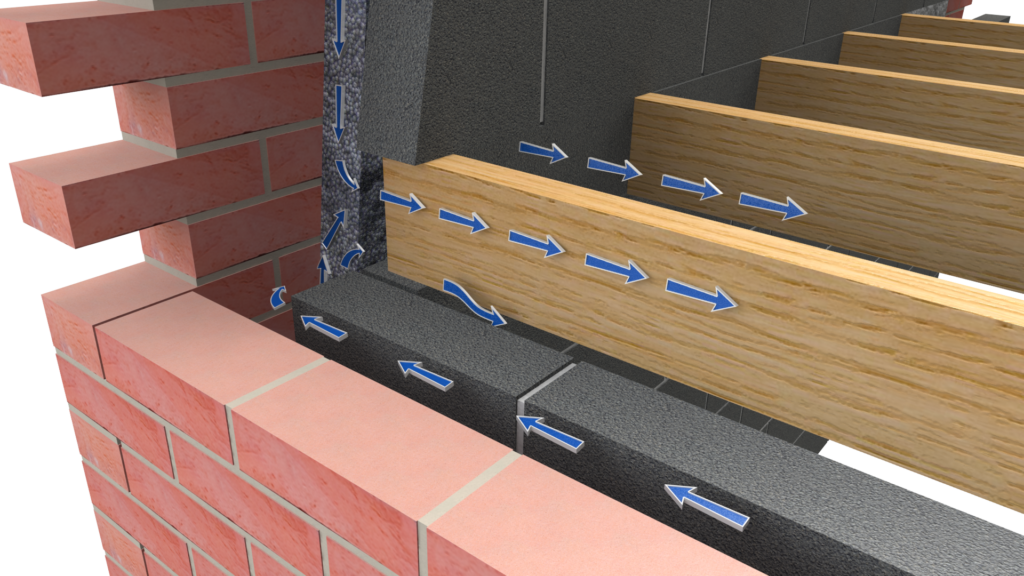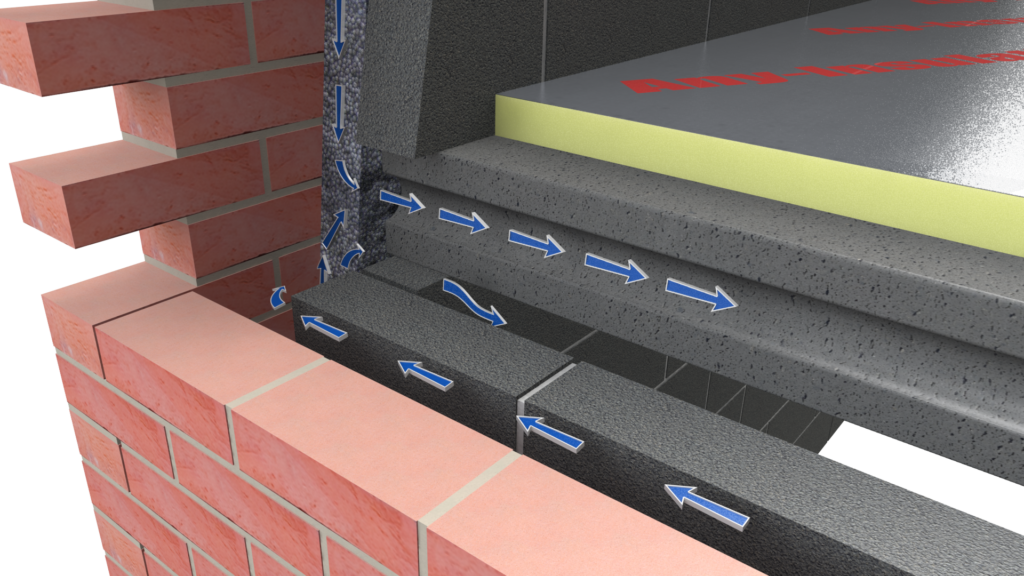ABOUT US
Who Are Aerstad?
Our parent company Atlantic Air was established in 2007 to undertake air tightness testing (or air permeability testing) on new buildings to comply with Building Regulations. Since then we have tested thousands of buildings e.g. houses, shops, offices, school classrooms etc. and have identified the same issues time and time again.
The main air leakage problem occurs at the junction between the external cavity wall and the first-floor. Air from the cavity wall can travel freely through the floor structure and into the building e.g. through hollow core concrete floor slabs or around timber floor joists. Typically, this problem will account for up to 70% of the total air leakage.



For years, we searched for a solution to this problem, we advised builders to fill the holes in floor slabs with mortar, to seal the joints between floor slabs with expanding foam, to seal gaps around floor joists with airtight tape, to plaster the blockwork between each floor joist, to wrap the ends of the floor slab or joists with airtight membrane. All of which were onerous, expensive and time consuming tasks, and in adverse weather conditions, none of these methods could be guaranteed to work.



Then in 2023, after countless hours of R&D, numerous prototypes and important laboratory testing, Aerstad was launched. The Aerstad system is the fastest, most effective way of guaranteeing an airtight seal at the first-floor to wall junction. Simply select the components you require, fix them to the internal leaf of the cavity wall (prior to the floor structure going into position), fold the airtight membrane over the end of the floor structure and continue building on top of the membrane.

With standard masonry construction, cold air from the external cavity has a free passage into the building through penetrations made by the first-floor structure e.g. hollow-core concrete slabs, timber joists, webbed eco joists etc. In most cases this floor to wall junction is either poorly sealed or ignored entirely. This dramatically increases wasteful heat transfer across the entire structural element, impacting negatively on building space heating costs and comfort of its occupants.

